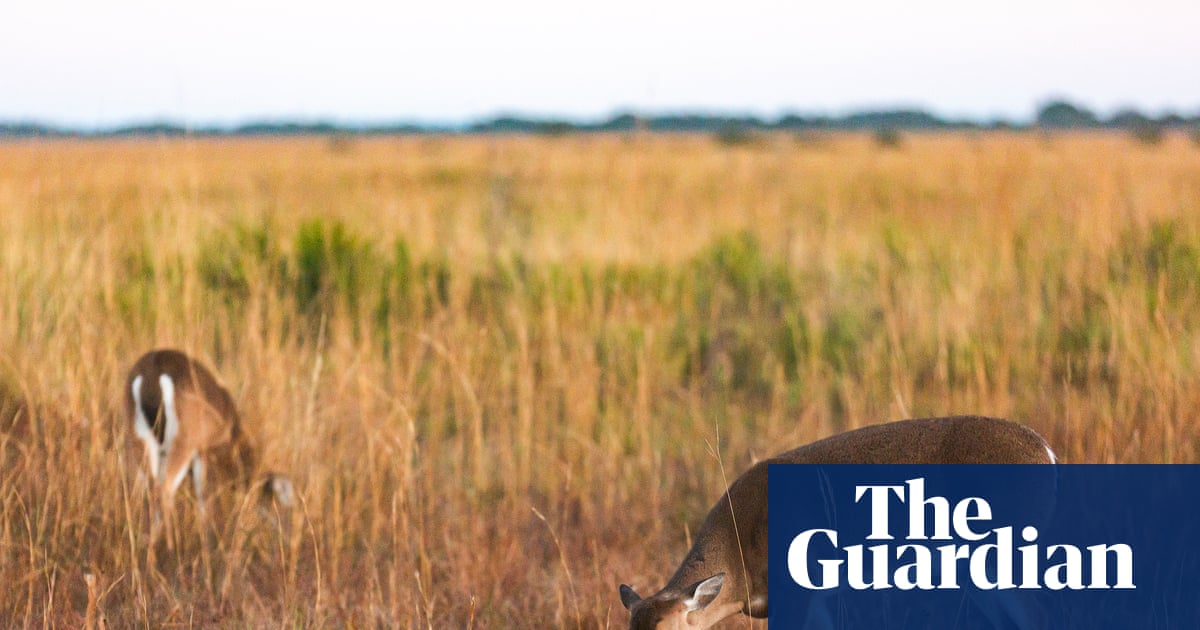Wildlife officials in Florida have discovered only the second case in the state of a deadly infection known colloquially as “zombie deer disease”, and are enforcing emergency measures to try to prevent a spread.
The highly contagious chronic wasting disease (CWD) was found during routine screening in the carcass of a young white-tailed doe that was struck by a vehicle in Holmes county, close to the Alabama border, early last month. The only previous recorded instance in Florida was in a four-year-old doe killed about a mile away in June 2023.
Experts are warning of a domino effect on wildlife management if the neurodegenerative disease, more prevalent in western and north-eastern states, is not contained. Although not harmful to humans, it has no vaccine or cure, and spreads easily through animal to animal contact, environmental contamination, and ticks.
“This disease right now is probably the greatest threat to deer and deer hunting in North America,” said wildlife biologist Steven Shea, an expert in deer populations who manages more than half a million acres of species habitat in central Florida.
“Based on everything we know, CWD is going to continue to spread. Every instance where it’s been tried to be contained and eradicated has been unsuccessful. So really what agencies are trying to do is basically slow down the spread, keep it in a relatively small area.”
The Florida Fish and Wildlife Conservation Commission (FWC) has implemented a special management zone and program of enhanced surveillance and monitoring in Holmes and neighboring Jackson and Washington counties. Test results are pending on 90 animals.
The disease is a so-called silent killer because an infected deer can live for several years without exhibiting symptoms. It will eventually succumb to brain tissue damage and experience a range of symptoms including weight loss, behavioral abnormalities, loss of coordination, excessive salivation, and eventually death, according to the University of Florida’s department of wildlife ecology and conservation.
The state’s white-tailed deer population is estimated at up to 700,000, with about 100,000 hunted each year, making it Florida’s most popular game animal.
FWC implemented special rules in the CWD management zone for the deer hunting season beginning later this month, including mandatory checking of all carcasses.
“Florida’s early detection puts us in a best-case scenario for CWD management, as a smaller outbreak is more realistic to contain,” James Kelly, the commission’s CWD surveillance coordinator, said in a statement.
“Hunters are our first line of defense in managing this disease. Each sample helps us track the spread of the disease and informs our strategies to manage it effectively.”
Shea said he feared a “domino effect” if CWD took hold in Florida.
“Hunters have to send a head in for testing, they’re waiting on the meat, and if it comes back positive they have to discard the meat,” he said.
“So we’re fearful the number of hunters of white-tailed deer will drop. Hunters are the major way we control deer populations in many areas of the country and if that goes away you’re still going to have high numbers of deer, [but] there’s going to be bigger impacts on vehicle strikes, and crop depredation.
“Hunters provide one of the largest revenue sources that supports all fish and wildlife management in North America and if fewer hunters are hunting there’s less money that comes in to seed programs that help all wildlife, not just white-tailed deer.”
First Appeared on
Source link











